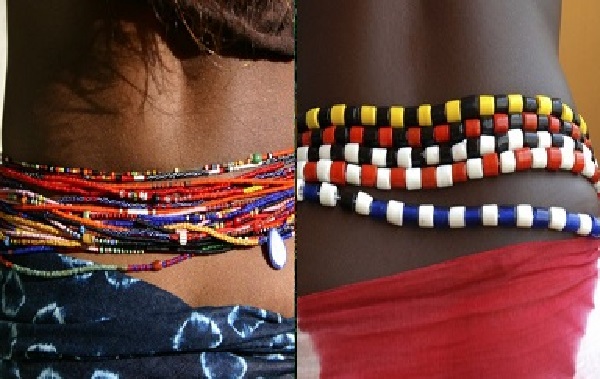Waist beads are a traditional African fashion accessory usually made of small beads on a string and worn around the waist or hips for several reasons, according to African tradition.
Based on the country of origin, waist beads come in different colours, shapes and sizes, and some of them also contain charms and crystals. In Ghana, Nigeria, Senegal, Sierra Leone and other West African countries, waist beads are symbols of fertility, sensuality, femininity and spiritual well-being.
Speaking to Awoko at Big Market in central Freetown, Fatmata Kabbay who trades in African designs and beads, said for older people, wearing waist beads is a fashion accessory as it was in the past for several reasons. The difference nowadays is that waist beads have been incorporated into different styles and modes of fashion that even ladies and some gay men who do not know about the traditional aspect of wearing them do so in the name of fashion, even wearing them as ankle-beads.
Research also shows that different colours of waist beads signify different things. For example, brown beads around the waist represent earth and stability, while white represents light, truth and purity. Gold represents good health, power and wealth; pink is for care, beauty, kindness and love. Orange signifies courage, self-confidence and vitality, while blue represents loyalty and truth. Green beads around the waist represent fertility, abundance, nature and prosperity, and are worn by most Africans, Asians and South Americans (Brazilians). Red beads symbolise confidence and vitality.
In Jamaica and other Caribbean nations, according to the Rastafarian culture, the colours green, yellow, red and black represent power. Green represents the vast green land of Africa feeding its people and preventing them from seeking, cap in hand, foreign aid; the yellow is the abundant sunshine to power Africa’s development; the red is the blood shed by our forefathers during slavery. While most African countries are independent, the Rastas believe that they are still being held captive under the dictates of the international community. The colour black is for its people, the African race; despite coming from different cultures, tribes, religions and borders, we are one people.
In Sierra Leone, wearing beads around the waist is for luck, to make a child walk, to keep evil people away, to make a man fall in love or for fertility to have children. Waist beads can be worn on babies during a naming ceremony to accentuate their waistlines and encourage their hips to grow. They can also be used as measures of weight. When the wearer gains weight, the bead’s belt climbs up; when s/he loses weight, it falls elegantly on the hips, making it look sexy.
Wearing a waist bead can help a woman to become aware of her stomach and posture, because the bead fits quite differently depending on how the woman is sitting. The bead can serve as a reminder to sit up straight, engage your stomach muscles, relax the back and breathe properly.
In conclusion, waist beads are here to stay and should be much appreciated by many as fashion accessories, while others use them against evil eyes and negative energy.



 Post a comment
Post a comment









Comment(s)
Disclaimer: Comments expressed here do not reflect the opinions of Sierraloaded or any employee thereof.
Be the first to comment